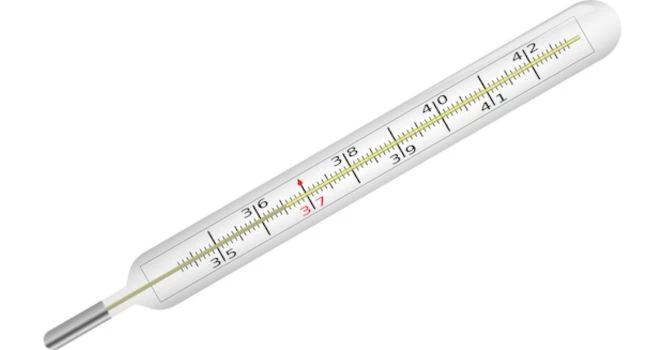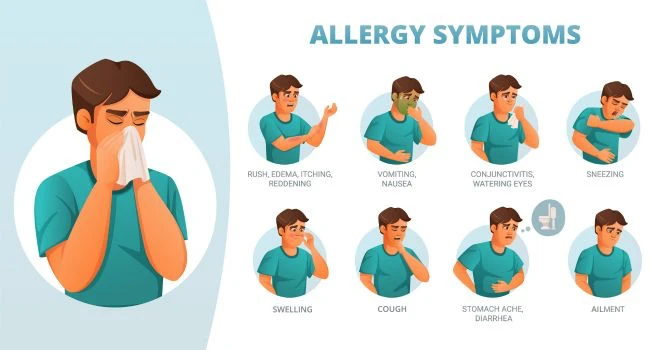Body Temperature in Fever
All of us have body temperature, which remains constant, irrespective of the environmental temperature. Whether it’s snowing or in the middle of summer, our temperature remains constant. We are warm blooded.
What is Normal Human Body Temperature?
Normal Human Body Temperature is 37°C or 98.6°F
Formula for converting celsius scale to Fahrenheit scale is
°C = 5/9 (°F-32)
°F = (°C x 1.8 ) + 32
A person’s temperature is not always 37°C or 98.6°F . It varies and few factors which influence it are
- Age – Older people have lower body temperature without indicating any health problem.
- Sex – Male or Female
- Morning afternoon evening
- After meals
- Exercise
- Sleep
- Emotional States
- Menstrual cycle
The factors influencing it, keep the body temperature within a range. These are normal variations of body temperature. These are in a range of 97°F (36.1°C) and 99°F (37.2°C) .
What controls the Human Body Temperature?
The Hypothalamus, in the Brain, controls and regulates Human Body Temperature either by increasing Heat Production or increasing Heat Loss from the Body .

Body produces heat by various mechanisms
- Metabolism
- Physical Activity
- Hormones
- During Summer
- Shivering
The above activities raise the temperature.
Body Loses heat by various mechanisms
- conduction
- Radiation
- Convection
- Evaporation
- Panting
The above activities decrease the temperature.
The increase or decrease of your body temperature is sensed by the hypothalamus when blood passes through it. When you have fever, the temperature of blood also increases and the hypothalamus acts accordingly to get it back to normal.
The Set Point at Normal Physiological Conditions is 37°C or 98.6° F
FEVER is when the measured Temperature is 39°C or 100.4°F.
How and Where is Human Body Temperature measured?
We measure the human body temperature either in celsius scale or Fahrenheit scale by
- Clinical Thermometer
- Digital Thermometer
- Infrared Thermometer.

Clinical Thermometers have a potential for Mercury exposure or ingestion, so they are no longer used or recommended. Digital Thermometers and IR thermometers are used.

We can measure the body temperature from different parts of our body, such as
- Mouth (Oral Temperature)
- Under the ArmPits (Axillary Temperature)
- Rectum (Rectal Temperature)
- Over the Skin (Surface Temperature)
While we are in the midst of seasonal flu or pandemic, we know we shouldn’t touch our mucous membranes , which are our mouth, eyes or nose. So the best method would be to measure the axillary temperature.

Steps to Record Body Temperature in Axilla with Digital Thermometer
- Wash hands with soap and water.
- Clean the Probe Tip with an alcohol swab and allow it to dry.
- Wipe Armpit dry with a clean cloth.
- Switch on the thermometer; After you switch on, it will show previous reading, Next
- Place the Probe Tip in the armpit and keep your arm pressed firmly at the side.
- Place it till you hear beeper sound, it takes around 20 seconds to 30 seconds
- Remove and check the reading and note it with date and time.
We add 1°C to the recorded axillary temperature . Most accurate is the rectal temperature. But for Practical reasons, we measure it as we have to inform our family doctors, so that they could guide accordingly.
Another method is by IR Thermometer or Infrared Thermometer
- Aim at the forehead straight or hand and it should be perpendicular to the skin surface,
- It should be 2 cm to 5 cm away from the forehead or to the skin surface.
- Press the button to record and note the reading.
When to Consult a Doctor?
FEVER means something is wrong and your body is fighting it. It’s generally harmless and resolves by itself requiring no treatment .
Consult you family doctor if Fever is accompanied by
- Skin Rash
- Difficulty breathing
- Persistent cough
- Decreased consciousness or Confusion of recent onset
- New unexplained Bruising or Bleeding (without previous injury)
- Persistent Diarrhea
- Persistent Vomiting (other than air sickness)
- Headache with stiff neck, or appears obviously unwell.
While it’s important to give the correct medical history of your illness, so that your Family doctor would guide you through this.












